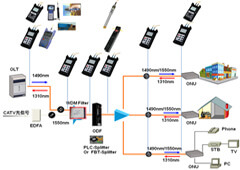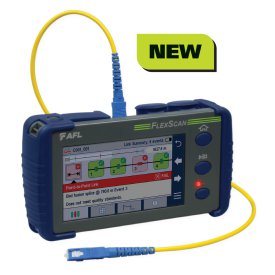Comprehending Exactly How an Optical Measurement System Enhances Precision in Industrial Applications
Optical measurement systems play an important function in improving precision across various commercial applications. By leveraging innovative modern technologies such as laser interferometry and 3D imaging sensors, these systems offer high-resolution, non-contact dimensions. This ability lessens the risk of damaging sensitive components while making sure precision. The impact of these systems expands past plain measurements. Exploring their benefits, applications, and future patterns reveals a complex landscape of technology and obstacles that benefits closer assessment.
The Fundamentals of Optical Measurement Systems
Optical measurement systems function as necessary devices in various commercial applications, providing specific information collection and evaluation. These systems make use of light as a main methods of measurement, leveraging optical principles to analyze dimensions, settings, and surface area attributes of things. They integrate elements such as lasers, cams, and sensors, which work together to record high-resolution photos and data.
The innovation enables non-contact measurements, minimizing the threat of damaging delicate elements. Optical measurement systems are flexible, finding energy in quality assurance, setting up verification, and dimensional evaluation throughout different fields. They are particularly effective in environments where typical measurement methods might fall short, such as measuring complicated geometries or observing rapid movements.
As sectors remain to progress, the combination of optical measurement systems will remain critical for making sure accuracy and effectiveness, eventually boosting item top quality and operational productivity in various producing procedures.
Trick Technologies Behind Optical Measurement
Secret innovations such as laser interferometry methods and 3D imaging sensing units play a crucial function in the performance of optical measurement systems (fibre testing equipment). These innovations enable exact dimensions and in-depth evaluation in different industrial applications. Understanding their functionalities is essential for taking advantage of the complete capacity of optical measurement systems
Laser Interferometry Techniques
Many laser interferometry strategies have actually revolutionized the field of optical measurement, providing unprecedented accuracy and accuracy in various commercial applications. These methods use the interference of meaningful light waves to gauge range, variation, and surface irregularities with nanometer-level precision. Typical approaches consist of Michelson interferometry, which splits a beam and evaluates phase changes, and Fabry-Pérot interferometry, known for its high resolution in measuring little adjustments. Additionally, laser Doppler interferometry employs regularity shifts to examine velocity, making it invaluable in dynamic measurements. The versatility of these techniques permits their assimilation right into diverse production processes, boosting top quality control and ensuring adherence to rigorous tolerances. Therefore, laser interferometry continues to play an important role beforehand commercial measurement criteria.
3D Imaging Sensors
Innovations in measurement modern technology have caused the advancement of 3D imaging sensors, which play a significant function in optical measurement systems. These sensing units catch three-dimensional information via different methods such as triangulation, time-of-flight, and structured light. By properly rebuilding the shape and measurements of objects, 3D imaging sensors boost the accuracy of measurements in commercial applications. They offer real-time feedback, facilitating quality assurance and making certain that elements satisfy stringent specs. Additionally, their ability to run in difficult atmospheres, such as differing illumination problems, makes them indispensable in producing procedures. As markets progressively embrace automation, the combination of 3D imaging sensing units right into optical measurement systems is anticipated to drive more enhancements in performance and precision.
Advantages of Optical Measurement in Market
Standard measurement techniques have long been the requirement in industrial setups, optical measurement systems provide substantial advantages that improve accuracy and performance. These systems make use of light to capture data, leading to high-resolution dimensions that are often unattainable with traditional methods. The non-contact nature of optical dimensions minimizes the danger of damaging delicate parts throughout the evaluation process. Furthermore, the speed of optical measurements allows for rapid information procurement, facilitating timely decision-making in fast-paced commercial atmospheres.
Optical systems are adaptable, capable of gauging different materials and shapes without the need for extensive recalibration. This versatility adds to improved process and efficiency. The automation potential of optical measurement systems decreases human mistake, guaranteeing consistent top quality control. Generally, the combination of optical measurement modern technology represents a dynamic shift towards boosted accuracy and dependability in industrial operations, eventually causing improved item high quality and functional effectiveness.
Applications of Optical Measurement Systems

Optical measurement systems play a critical role in boosting manufacturing procedure optimization by offering specific data for decision-making. These systems guarantee quality assurance assurance via real-time tracking and evaluation of production metrics. As sectors increasingly take on these modern technologies, their influence on performance and product dependability comes to be noticeable.
Manufacturing Process Optimization
Enhancing production blog process efficiency is progressively dependent on the integration of optical measurement systems. These systems offer real-time information on different specifications, enabling producers to evaluate processes with a high level of precision. By enabling accurate dimensions of dimensions, surface attributes, and product properties, optical measurement systems help with the identification of ineffectiveness and bottlenecks in assembly line. The immediate feedback from these systems empowers designers to make informed decisions, resulting in enhanced machining, setting up, and completing processes. Additionally, the capacity to monitor conditions continuously permits flexible adjustments, reducing downtime and waste. As sectors go for greater productivity and reduced functional prices, optical measurement systems emerge as important devices for improving manufacturing process optimization.

Quality Control Guarantee
The combination of optical measurement systems greatly influences quality assurance guarantee in industrial i loved this setups. These systems provide exact and non-destructive dimensions, enabling suppliers to find problems and inconsistencies early in the production procedure. By making use of sophisticated imaging strategies, such as laser triangulation and interferometry, optical measurement systems ensure that components fulfill stringent specifications. This assists in real-time surveillance, decreasing waste and lessening the threat of malfunctioning products reaching the marketplace. In addition, the data gathered can be examined to refine production procedures better, leading to continuous enhancement. Eventually, the adoption of optical measurement systems boosts reliability and consistency in quality assurance, promoting higher confidence among stakeholders and clients alike in the last products delivered.
Situation Studies: Effective Executions
Various markets have actually successfully incorporated optical measurement systems to enhance their functional effectiveness and product top quality. For example, in the auto field, a prominent manufacturer embraced a laser triangulation system to keep an eye on the positioning of automobile elements. This execution greatly reduced setting up mistakes, causing enhanced security and reduced costs.
In the aerospace sector, a leading airplane supplier used optical metrology for accuracy measurements of turbine blades, accomplishing a decrease in manufacturing resistances and much better performance criteria.
In a similar way, a consumer electronics firm carried out optical measurement innovation during the production of smart device displays, leading to enhanced top quality control and a reduction in defective items.
These instance research studies illustrate just how optical measurement systems not only improve accuracy yet likewise add to total functional effectiveness, showing their worth across numerous industries. look at these guys By resolving particular needs, these systems have actually confirmed to be important devices in modern industrial applications.
Difficulties and Limitations of Optical Measurement
While optical measurement systems supply considerable advantages in different commercial applications, they are not without their challenges and restrictions. One significant worry is level of sensitivity to environmental conditions, such as temperature level changes, moisture, and dust, which can negatively influence measurement accuracy. Additionally, optical systems frequently need specific alignment and calibration, making them prone to human mistake throughout setup and operation. One more constraint is the possibility for interference from ambient light, which can distort measurements and require complicated filtering system strategies. In addition, specific products and surface areas might offer troubles, as reflective or clear characteristics can result in inconsistent analyses. The expense of premium optical parts and systems can additionally be an obstacle for some markets, limiting extensive adoption. Specialized training is frequently required for employees to properly run and maintain these systems, including to the general complexity and operational obstacles.
Future Fads in Optical Measurement Innovation
As developments in modern technology proceed to shape industrial procedures, the future of optical measurement systems is positioned for significant evolution. Arising fads show a shift towards boosted combination of synthetic intelligence and artificial intelligence, making it possible for systems to examine data in real-time, recognize patterns, and improve decision-making procedures. On top of that, the growth of miniaturized sensors and advanced optics is expected to result in even more compact and functional measurement options, making them available for a bigger variety of applications.
Furthermore, the consolidation of 3D imaging and high-resolution capacities will certainly permit unprecedented precision in measurements, which is important for markets such as aerospace and automobile. The promote automation and Sector 4.0 will also drive the demand for optical measurement systems that can quickly user interface with other innovations. As these fads unravel, optical measurement systems will likely become essential to accomplishing better performance and accuracy throughout various industrial industries.

Regularly Asked Concerns
How Do Optical Measurement Systems Compare to Typical Measurement Techniques?
Optical measurement systems provide greater precision and speed contrasted to standard techniques - robotic vision. They lessen human mistake, boost information collection performance, and offer real-time outcomes, making them significantly chose in numerous industrial applications for specific measurements
What Industries Advantage the Many From Optical Measurement Systems?
Optical measurement systems significantly profit markets such as aerospace, auto, and electronics. Their capacity to offer high-precision dimensions enhances quality assurance, lowers manufacturing mistakes, and enhances total efficiency, making them important in competitive manufacturing environments.
Can Optical Measurement Systems Be Custom-made for Specific Applications?
Optical measurement systems can undoubtedly be tailored for specific applications. By changing criteria such as wavelength, resolution, and calibration techniques, markets can customize these systems to satisfy one-of-a-kind precision and accuracy demands properly.
What Is the Maintenance Demand for Optical Measurement Systems?
The upkeep needs for optical measurement systems normally include routine calibration, cleansing of optical parts, and software updates. Following these methods warranties precision, reliability, and durability of the measurement tools in numerous applications.
How Do Environmental Elements Impact Optical Measurement Accuracy?
Ecological variables, such as temperature level fluctuations, humidity, and dust, significantly effect optical measurement precision. These aspects can misshape light courses and conflict with sensing unit readings, inevitably jeopardizing the reliability and precision of dimensions in commercial settings.